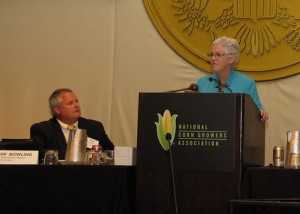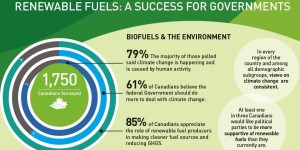 Alliance BioEnergy Plus, Inc. has announced that Charles Sills has been formally elected to its Board of Directors by unanimous vote.
Alliance BioEnergy Plus, Inc. has announced that Charles Sills has been formally elected to its Board of Directors by unanimous vote.- The total onshore wind installed capacity in Serbia will rise from 102.5 MW in 2015 to an estimated 522 MW by 2025, boosted by several new projects and the government’s new Energy Law, which came into effect in January 2015, says research and consulting firm GlobalData. “Serbia Wind Market: Unblocking Opportunities in the Electricity Generation Mix,” states that while this increase will occur at an impressive Compound Annual Growth Rate (CAGR) of 48%, Serbia will reach approximately 250 MW of onshore installed capacity by 2020: only half of its 500 MW capacity cap for wind energy by that year.
- Trina Solar Limited has announced that it has signed an agreement to supply 51 MW of its Dual Glass Modules to Yunnan Electric Power Design Institute and the EPC provider for the agricultural PV power plant project located in Xishuangbanna, Yunnan province in China. The plant will be used to power equipment in tea plantations, and will be the first of its kind within China. The agricultural PV project has the capacity of 100 MW totally.
- The Dutch Postcode Lottery has announced 25 nominees for its ninth annual Postcode Lottery Green Challenge, the sustainable business plan competition that aims to promote a low carbon economy and a greener environment. This year’s challenge attracted 271 sustainability-focused entrants from 56 countries, with the selected nominees from England, Germany, Kenya, Netherlands, Nigeria, Spain, South Africa, Switzerland, Sweden, and the United States.

HydroPower Opportunities Abound in Oregon
HydroVision took place this week in Oregon and during the event, Voith Hydro President and CEO Bob Gallo said that the state provides, “the perfect setting to shine a light on the value of hydropower”. The company has an office in Springfield, Oregon in addition to offices in several other states.
“Oregon is the perfect showcase for hydropower’s past, as well as its future potential,” said Gallo. “Though hydropower accounts for over 50% of Oregon’s power generation, the state has the capacity to double the clean and renewable hydropower it already provides to power its homes and businesses. With the right policies in place, we can truly unleash hydropower’s vast untapped potential, and Voith Hydro has the environmentally-friendly hydropower equipment and technology to power the future.”

Francis-Turbine for the hydro power plant Bratsk, Siberia.
Awarded picture of the year and product image of the year at the German “PR Bild Award 2014”.
Hydroelectric power provides Oregon with half of the state’s power. According to a 2014 Department of Energy New Stream-reach Development report, Oregon could more than double its current 8,000 MW in installed capacity and its potential, finds the report, is greater than any other state. The potential capacity is part of 65,000 MW of available but untapped hydropower across the country.
The same report said the U.S. can develop this potential by powering many of the approximately 80,000 dams that currently do not produce hydroelectric power and spread up the process to hydropower by streamlining an often burdensome and timely licensing process. Congress is currently attempting to build on 2013 legislation that streamlined the process for many small hydropower projects by exploring further regulatory reforms that will reduce inefficiencies and redundancies in the licensing process for projects both large and small. The need, agress Gallo, for timely reform is important given that 250 projects representing 11,000 MW of installed capacity are up for relicensing over the next 10 years.
While hydropower’s direct environmental benefits are immense, explained Gallo, its other attributes are significant. It supports the development of other renewables through baseload power generation, provides for flood control, creates recreational opportunities, and supports irrigation projects. It also creates jobs. By one estimate, with the proper policies in place, hydropower could create 1.4 million cumulative jobs by 2025, on top of the 300,000 jobs already supported by American hydropower.
“Hydropower is a win-win for both the environment and the economy,” Gallo concluded. “Voith Hydro looks forward to continued progress to bring more of America’s largest renewable resource online.”
EPA Chief Defends RFS Proposal to Corn Growers
 Speaking to members of the National Corn Growers Association (NCGA) meeting in Washington DC this week, Environmental Protection Agency Administrator Gina McCarthy defended her agency’s proposed volume obligations under the Renewable Fuel Standard (RFS) while at the same time thanking farmers for their strong voice on the issue.
Speaking to members of the National Corn Growers Association (NCGA) meeting in Washington DC this week, Environmental Protection Agency Administrator Gina McCarthy defended her agency’s proposed volume obligations under the Renewable Fuel Standard (RFS) while at the same time thanking farmers for their strong voice on the issue.
“I know RFS matters deeply to corn growers,” said McCarthy. “You know we held a hearing in Kansas and I know you knew it because you showed up. Last month you were there in force. And I want to thank you for being out there.”
McCarthy told the farmers that “EPA is deeply committed to the RFS” and to the industry. “You might have heard that we are trying to shrink or kill this program, but the truth is we are committed to growing it,” she said. “The volumes we’ve proposed for 2015 and 2016 are designed to bust through any blend wall – even if you don’t believe it exists!”
McCarthy was invited to address the summer Corn Congress session by NCGA President Chip Bowling, a farmer from Newburg, Maryland. “I invited her to Corn Congress because I wanted farmers to hear from her directly,” said Bowling. “To her credit, she had the courage to show up and talk to farmers face to face.”
In her address, McCarthy also talked about the EPA’s Waters of the United States (WOTUS) rule, which is also a major issue of concern for corn farmers. EPA Administrator Gina McCarthy at NCGA Corn Congress
Enogen Corn for Ethanol Growers to Get Rebates
![]() Growers of Syngenta‘s Enogen corn, especially designed for ethanol production, will get rebates on some of their agricultural equipment. Chief Agri/Industrial Division will provide Enogen corn growers rebates on grain bins and other equipment.
Growers of Syngenta‘s Enogen corn, especially designed for ethanol production, will get rebates on some of their agricultural equipment. Chief Agri/Industrial Division will provide Enogen corn growers rebates on grain bins and other equipment.
A growing demand for high ethanol-yielding grain is creating the potential for corn growers to increase their income per acre. Earlier this year, Syngenta introduced the Ethanol Grain Quality Solution (EGQS), an initiative that includes agronomic protocols and best practices specifically designed to contribute to higher yields, improved grain quality and more ethanol per bushel.
“Grain quality requires attention to detail,” said Roger Townsend, President of Chief Agri/Industrial Division. “The goal should be to minimize quality deterioration at each step of production and during postharvest. We look forward to working with Enogen growers to help them maximize grain quality and return on investment.”
“Corn is the single biggest input cost for an ethanol plant, and ethanol yield per bushel is one of the biggest drivers of plant profitability,” said Guy Hartwig, head of Enogen grain operations at Syngenta. “Increasingly, ethanol plants are seeking not just clean, dry corn with little or no damage and foreign material, but also grain with quality characteristics that can maximize ethanol production per bushel, including more accessible starch. Chief’s industry-leading grain-handling technology and best-in-class customer service will help Enogen growers maximize profitability, while helping to support the ethanol industry.”
Chief’s stiffened bins have a great reputation for superior strength, durability and ease of installation. Greater access to technology and expertise from Chief will enable Enogen growers to provide ethanol plants with more high-quality corn.
DuPont Signs Cellulosic Ethanol Deal with Chinese Co.
 DuPont and Chinese company New Tianlong Industry Co. (NTL) have signed an historic deal that will bring cellulosic ethanol to China. This DuPont news release says the agreement allows NTL to license DuPont’s cellulosic ethanol technology and use DuPont Accellerase enzymes to produce renewable biofuel from the leftover biomass on Jilin Province’s highly productive corn farms.
DuPont and Chinese company New Tianlong Industry Co. (NTL) have signed an historic deal that will bring cellulosic ethanol to China. This DuPont news release says the agreement allows NTL to license DuPont’s cellulosic ethanol technology and use DuPont Accellerase enzymes to produce renewable biofuel from the leftover biomass on Jilin Province’s highly productive corn farms.
Combining NTL’s ethanol production expertise with processing technology, technical support and world-class enzymes supplied by DuPont, NTL will be able to produce cellulosic renewable fuel for the rapidly growing Chinese liquid biofuel market, which is projected to exceed 1.7 billion gallons per year by 2020.
“As we bring online the largest and most sophisticated cellulosic facility in the world in the State of Iowa in the United States, we are simultaneously working with leaders who share the same vision of producing the next generation of clean renewable fuels in their region,” said Jan Koninckx, global biofuels leader for DuPont Industrial Biosciences. “We are honored to have found such a strong partner in NTL. The company’s reputation for producing world-class grain ethanol makes it a superior candidate to put DuPont’s advanced technology to work to realize the additional economic and environmental benefits of cellulosic biofuel in China.”
“With its history of scientific innovation, collaboration and commitment to the ethanol industry, DuPont is an ideal partner for New Tianlong in our quest to bring the cleanest renewable fuel on the planet to China,” said SUN Guojing, general manager of NTL. “We look forward to working with DuPont over the coming years as we develop the biomass supply chain, construct a world-class facility, and produce fuel that delivers on the promise of reduced pollution and greenhouse gases. This project will augment our current excellent grade ethanol offerings and business and will make NTL the preeminent biofuel product supplier in China.”
This deal is expected to fill China’s aggressive goals for renewable energy, cutting its reliance on foreign oil and increasing employment opportunities for its large rural population.
USDA Accepting Applications for Biobased Products
Following a webinar this morning, U.S. Department of Agriculture (USDA) Secretary Tom Vilsack announced they are accepting applications for funding under the Biorefinery, Renewable Chemical, and Biobased Product Manufacturing Assistance Program. It was formerly known as the Biorefinery Assistance Program. The webinar discussed changes to the program as well as opportunities available to produce more biobased products.
 “This critical financing will enhance our efforts to build a robust, rural bioeconomy by helping to expand the availability of biobased products and to increase the number of commercial-scale biorefineries in the country,” Vilsack said. “In addition to the available funding, I am proud to announce that USDA has significantly improved the biorefinery program to help create lasting job opportunities in rural America.”
“This critical financing will enhance our efforts to build a robust, rural bioeconomy by helping to expand the availability of biobased products and to increase the number of commercial-scale biorefineries in the country,” Vilsack said. “In addition to the available funding, I am proud to announce that USDA has significantly improved the biorefinery program to help create lasting job opportunities in rural America.”
There will be two funding cycles. Applications for round one are due October 1, 2015. Applications for the second round are due April 1, 2016. For information on how to apply, see page 38432 of the July 6, 2015 Federal Register.
USDA has made significant improvements to the program. Biorefineries are now able to receive funding to produce more renewable chemicals and other biobased products in addition to advanced biofuels. In addition, biobased product manufacturing facilities are eligible to convert renewable chemicals and other biobased outputs into “end-user” products. Further, USDA has streamlined the application process.
USDA released a report on June 17, 2015 that shows America’s biobased industry is generating substantial economic activity and creating American jobs. According to the report, the U.S. biobased industry contributed four million jobs and nearly $370 billion to the American economy in 2013 alone.
Time is Now for Non-Renewable Carbon Fee
Advanced Biofuels USA has gone public with a new idea for capturing externalities of non-renewable fuels for funding needed research – a Non-Renewable Carbon Fuel User Fee. The organization made the announcement during the Congressional Renewable Energy and Energy Efficiency EXPO + Forum that took place in Washington D.C. on July 9, 2015.
“If we’re serious about reducing Climate Change caused by Green House Gases, then we need serious actions,” said Joanne Ivancic, executive director of Advanced Biofuels USA.  In her presentation, Ivancic laid out the salient points of the plan. “The first steps are including the price of Green House Gas (GHG) effects in non-renewable carbon fuels and committing serious money to renewable fuel research and infrastructure development.”
In her presentation, Ivancic laid out the salient points of the plan. “The first steps are including the price of Green House Gas (GHG) effects in non-renewable carbon fuels and committing serious money to renewable fuel research and infrastructure development.”
The Advanced Biofuels USA proposal uses lower priced renewable fuels to drive the consumer market. When the true costs of fuel become apparent, they argue, consumers will demand higher renewable portions of fuels for transportation, power and heat. The fee, which they base on current scientific estimates of climate change effects and mitigation costs, applies to only the non-renewable portion of liquid and gas used for transportation and stationary source combustion.
The fee would be between $50 and $100/ton of non-renewable carbon and translates into only 3.5 percent to 7 percent increases in current transportation fuel prices; or, less than the volatility we commonly experience in gasoline prices. The fee, Ivancic explained, will disappear as lower priced renewable fuels take over the market. Revenues from the fee will be used for two purposes:
- Renewable Fuel R&D: An immediate Apollo type program should be funded with between 50% and 60% of the fees. It should be administered by the National Science Foundation (NSF) and be focused on getting affordable non-food biomass fuels and gases into the pipeline in less than seven years.
- Renewable Fuel Infrastructure: The upgraded fuel pumps, decentralized processing/distribution modules, and temporary rebates to people not able to afford the initial lack of renewable fuel would be funded with between 40% and 50% of the fees. These programs would be run by the states.
Ivancic said the proposal will spur investment, innovation, installation and use of renewable choices. “Not only will we see a rapid reduction in GHG emissions,” she said, “but more important, a sustainable renewable fuel industry will create good jobs for Americans in research labs, rural towns, and urban manufacturing plants.”
Collection of this user fee would not require new bureaucracies. Existing consumer point-of-sale fuel and utility tax collections systems (for natural gas) would be used.
Canadians Support Renewable Fuels
Canadians believe in renewable fuels. A recent survey finds 88 percent of Canadians believe more renewable fuels should be produced in Canada and that government should do more to promote the industry. The poll was was commissioned by the Canadian  Renewable Fuels Association (CRFA) and shows that 85 percent of respondents feel pride in Canada’s biofuels industry.
Renewable Fuels Association (CRFA) and shows that 85 percent of respondents feel pride in Canada’s biofuels industry.
“This poll reinforces what the CRFA and our members have known for years: renewable fuels are important to and valued by the public,” said Andrea Kent, president of CRFA. “Eight in 10 Canadians believe renewable fuel products are clean, innovative and needed across the country. The renewable fuels industry also provides Canadians with over 14,000 jobs and generate $3.5 billion in economic activity every year.”
One in three Canadians would like there to be more support for renewable fuels, found the survey. In addition, when respondents learned of the current federal biofuels mandates, 31 percent said their impression of government action on climate change improved while sixty-seven percent also support increasing the level of biodiesel from the current mandate of 2 percent to 5 percent.
BioEnergy Bytes
 The Biotechnology Industry Organization (BIO) has announced six new members of its Industrial & Environmental Section Governing Board. The board members represent cellulosic biofuel producers, renewable chemical developers, and global branded product manufacturers. The new governing board members include: Chairman Christopher Standlee, Executive Vice President, Global Affairs, Abengoa Bioenergy; Vice Chairman Dan Cummings, President, Poet-DSM Advanced Biofuels; Michael Knutzen, Global Procurement Director PET and PlantBottle, The Coca-Cola Company; Tjerk de Ruiter, CEO, Corbion; Eli Ben-Shoshan, Director Strategy M&A Business Development, DuPont Industrial Biosciences; and Neil Goldsmith, CEO, Evolva.
The Biotechnology Industry Organization (BIO) has announced six new members of its Industrial & Environmental Section Governing Board. The board members represent cellulosic biofuel producers, renewable chemical developers, and global branded product manufacturers. The new governing board members include: Chairman Christopher Standlee, Executive Vice President, Global Affairs, Abengoa Bioenergy; Vice Chairman Dan Cummings, President, Poet-DSM Advanced Biofuels; Michael Knutzen, Global Procurement Director PET and PlantBottle, The Coca-Cola Company; Tjerk de Ruiter, CEO, Corbion; Eli Ben-Shoshan, Director Strategy M&A Business Development, DuPont Industrial Biosciences; and Neil Goldsmith, CEO, Evolva.- Consolidated Edison Development has completed an agreement with Campbell County Wind Farm Holdings to acquire, construct and operate a wind power project on property owned by a group of local farmers in Pollock, South Dakota. The 95 MW wind farm, currently under construction, consists of 55 1.7MW GE wind turbines. The project, which will generate approximately 400,000 MWh of power annually, is scheduled to be operational by the end of this year.
- Eight utility-scale solar farms are being added to North Carolina’s energy mix. The portfolio totaling 67.3MW equals a reduction of carbon emissions for 7,946,325 million gallons of gasoline consumed. It brings the total North Carolina solar projects to 103.5MW for the partnership between Sol Systems, National Cooperative Bank, and Strata Solar.
- Methes Energies International Ltd. has announced that it has closed on a $1.25M registered direct placement with a small group of institutional investors. Chardan Capital Markets, LLC, acted as the sole placement agent for the transaction. The funds will be used to start up production of Epoxidized Soybean Oil and Natural Polyol.
Businesses Should Lead Way on Clean Power
Environmental Entrepreneurs (E2) and the American Sustainable Business Council (ASBC) are calling on the National Governors Association (NGA) to implement the federal Clean Power plan. If done correctly, states can reap benefits, say the groups, that come with a clean energy economy. NGA is preparing for its summer conference in West Virginia July 23-25, 2015, around the same time the Environmental Protection Agency (EPA) is set to announce final standards. The Clean Power Plan is the first plan that limits carbon pollution emitted by power plants.
 “The Clean Power Plan is not just smart environmental policy, it’s a major economic catalyst that will create jobs and drive economic growth,” said Bob Keefe, E2’s executive director. “Governors have a choice: They can implement the plan on their own terms and reap the benefits, or they can skirt the law and get left behind by other states.”
“The Clean Power Plan is not just smart environmental policy, it’s a major economic catalyst that will create jobs and drive economic growth,” said Bob Keefe, E2’s executive director. “Governors have a choice: They can implement the plan on their own terms and reap the benefits, or they can skirt the law and get left behind by other states.”
The formal letter also suggests NGA can help states by leading and facilitating engagement between governors, the EPA, state regulators and others.
“The Clean Power Plan will help states grow their economies and create jobs,” said ASBC’s Vice President of Policy Richard Eidlin. “It also gives businesses the certainty and transparency they need to increase investment in clean energy.”
E2/ASBC made their calls to action as some in Congress and industry urge states to skirt the law by failing to develop state plans. For instance, Senate Leader Mitch McConnell in March began urging governors to refuse to implement the standards. However, as the E2/ASBC letter states, steering a state down such a legally reckless path would negatively impact a state’s economy.
According to the letter from E2 and ASBC, the decision to “opt out” of the Clean Power Plan is simply bad for business. “The business community needs a consistent regulatory system based on sound science,” ASBC’s Eidlin added. “The Clean Power Plan provides this. Tackling climate change isn’t just good for the environment – it’s good for businesses, too.”
